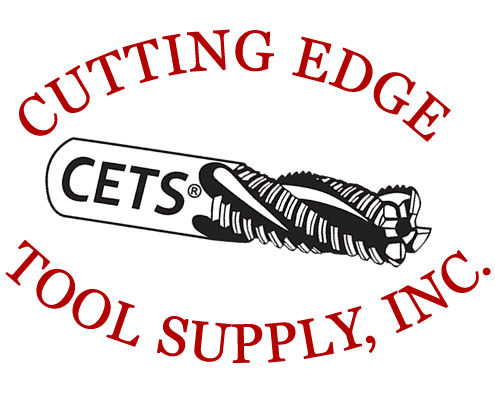Resources
Decoding the Language of Precision:
A Guide to CNC Nomenclature
Computer Numerical Control (CNC) has revolutionized manufacturing, transforming raw materials into intricate components with unparalleled precision. However, for newcomers and even seasoned professionals, the world of CNC can often feel like a foreign language, riddled with cryptic codes, acronyms, and specialized terminology. Understanding CNC nomenclature is not just about memorizing definitions; it's about grasping the underlying logic that drives these sophisticated machines.
This guide aims to demystify the essential vocabulary of CNC, providing a comprehensive overview that will empower you to navigate the machine shop floor with confidence and interpret CNC programs with greater clarity.
---The Foundation: Axes and Motion
At the heart of CNC operation is the concept of controlled motion along various axes. This is arguably the most fundamental aspect of CNC nomenclature.
- Axes (X, Y, Z, A, B, C):
- X-axis: Typically represents longitudinal movement, often left-to-right or front-to-back on a milling machine or along the length of a lathe.
- Y-axis: Represents transverse movement, often in-and-out or side-to-side, perpendicular to the X-axis.
- Z-axis: Represents vertical or depth movement, often up-and-down (for milling) or in-and-out of the spindle (for turning).
- A-axis: Rotary axis around the X-axis.
- B-axis: Rotary axis around the Y-axis.
- C-axis: Rotary axis around the Z-axis.
- Degrees of Freedom: The number of independent axes a machine can control. A typical 3-axis mill has X, Y, and Z. 5-axis machines, common in aerospace and complex mold making, add two rotary axes (e.g., X, Y, Z, A, B).
- Work Coordinate System (WCS): Defines the origin (0,0,0) for the part being machined. This is crucial for accurate part placement and program execution.
- Machine Coordinate System (MCS): The fixed, absolute reference point of the CNC machine itself, usually defined by the machine builder.
The Blueprint: G-Codes and M-Codes
The instructions that tell a CNC machine what to do are communicated through a specialized programming language primarily composed of G-codes and M-codes.
- G-Codes (Preparatory Functions): These codes dictate the *type* of motion or operation the machine will perform. They prepare the machine for a specific action. Examples include:
G00: Rapid Traverse (non-cutting movement at maximum speed).G01: Linear Interpolation (straight-line cutting movement at a programmed feed rate).G02: Circular Interpolation Clockwise (cutting in a circular arc clockwise).G03: Circular Interpolation Counter-Clockwise (cutting in a circular arc counter-clockwise).G40/G41/G42: Cutter Compensation (tool radius compensation off/left/right).G90/G91: Absolute/Incremental Programming (defines how coordinates are interpreted).
- M-Codes (Miscellaneous Functions): These codes control auxiliary functions of the machine, such as spindle on/off, coolant on/off, tool changes, and program stop/end. Examples include:
M03: Spindle On Clockwise.M05: Spindle Stop.M08: Coolant On.M09: Coolant Off.M06: Tool Change.M30: Program End and Reset.
Speed and Feed: The Rhythm of Cutting
Controlling the speed of the cutting tool and the rate at which it moves through the material is critical for machining efficiency and surface finish.
- RPM (Revolutions Per Minute): The rotational speed of the spindle and, consequently, the cutting tool. Programmed with the
Saddress (e.g.,S1500for 1500 RPM). - Feed Rate (F): The rate at which the cutting tool moves along its path. Typically expressed in inches per minute (IPM) or millimeters per minute (MMPM) for milling, or inches per revolution (IPR) or millimeters per revolution (MMPR) for turning. Programmed with the
Faddress (e.g.,F10.0for 10 inches per minute). - Chip Load: The thickness of the material removed by each tooth of a cutting tool per revolution. An important factor in determining feed rates and tool life.
Tooling and Workholding: The Supporting Cast
The success of a CNC operation relies heavily on the proper selection and use of cutting tools and secure workholding devices.
- Tool (T): Refers to the specific cutting tool being used. Programmed with the
Taddress (e.g.,T01for tool number 1). - Tool Offset (H/D):
- Length Offset (H): Compensates for the varying lengths of different tools, ensuring the correct cutting depth.
- Diameter Offset (D): Compensates for the radius or diameter of a tool, allowing for accurate contouring.
- Workholding: Devices used to securely hold the workpiece during machining. Common examples include:
- Vises: Mechanical clamping devices.
- Clamps: Various types of clamps used to secure parts directly to the machine table.
- Chucks: Used on lathes to hold cylindrical workpieces.
- Fixtures: Custom-designed devices for holding specific or complex parts.
Beyond the Basics: Advanced Terminology
As you delve deeper into CNC, you'll encounter more specialized terms:
- Post-Processor: Software that translates the generic toolpaths generated by CAD/CAM software into the specific G-code and M-code format required by a particular CNC machine's control.
- CAD (Computer-Aided Design): Software used to create 2D and 3D models of parts.
- CAM (Computer-Aided Manufacturing): Software that takes CAD models and generates toolpaths and G-code for CNC machining.
- Datum: A theoretical exact point, axis, or plane from which dimensions are measured.
- Tolerance: The permissible variation from a specified dimension.
- Runout: The amount of deviation of a rotating tool or spindle from its true axis of rotation.
- Interfacing: The connection and communication between different CNC system components (e.g., machine, control, software).
Conclusion
Understanding CNC nomenclature is an ongoing process, but by familiarizing yourself with the core terms and concepts outlined in this guide, you'll be well on your way to speaking the language of precision manufacturing. As you continue to learn and work with CNC machines, you'll find that each term plays a vital role in the intricate dance of automation that defines modern machining. Embrace the learning curve, and soon you'll be confidently programming, operating, and troubleshooting these remarkable machines.
